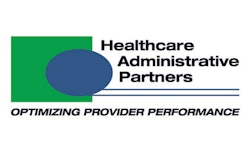
The U.S. Centers for Medicare and Medicaid Services (CMS) has released its annual proposal for changes to the Medicare payment system for the coming year. The Medicare Physician Fee Schedule (MPFS) Proposed Rule contains not only proposed adjustments to Medicare reimbursement but also proposed changes to the Quality Payment Program (QPP) for 2021 and beyond.
Medicare fee schedule payment and valuation changes
Conversion factor
 Sandy Coffta of Healthcare Administrative Partners.
Sandy Coffta of Healthcare Administrative Partners.The conversion factor is proposed to be cut 10.61% for 2021, from the current $36.0896 per Relative Value Unit (RVU) to the proposed rate of $32.2605. This is the dollar value that is applied to the RVU scale in order to calculate the reimbursement for each procedure code Medicare pays for, which means that regardless of any other valuation changes, there would be an across-the-board 10.61% decrease in reimbursement.
After all of the proposed valuation adjustments are taken into account, CMS estimates the impact to radiology will be as follows:
| Diagnostic Radiology | 11% Decrease |
| Interventional Radiology | 9% Decrease |
| Nuclear Medicine | 8% Decrease |
| Radiation Oncology and Therapy Centers | 6% Decrease |
Restructuring of evaluation and management services
The biggest factor affecting the decrease in reimbursement is the adoption of a new coding structure for evaluation management (E/M) services. Under the revised E/M coding structure, physicians may elect to document a visit based either on the time spent with the patient or on the medical decision-making involved in the visit.
There will continue to be separate payments for each of the five levels of office or outpatient E/M visits along with a new add-on code for prolonged visits and for complex patients. This is a change from the previously announced plan to use a single, blended rate for a range of E/M codes. No change was made to the list of E/M office visits captured in the 10- and 90-day global codes.
The requirement for budget neutrality within the overall Medicare program means that the increases in E/M payments will cause payment for other services to be reduced. The table below shows the proposed level of change in E/M payment levels:
| Code | 2020 Rate | 2021 Rate (proposed) | Change |
| New patients | |||
| 99201 | $46.56 | Deleted | N/A |
| 99202 | 77.23 | 69.04 | (11%) |
| 99203 | 109.35 | 106.14 | (3%) |
| 99204 | 167.09 | 159.37 | (5%) |
| 99205 | 211.12 | 210.66 | 0% |
| Established Patients | |||
| 99211 | 23.46 | 22.26 | (5%) |
| 99212 | 46.19 | 54.20 | 17% |
| 99213 | 76.15 | 86.78 | 14% |
| 99214 | 110.43 | 122.91 | 11% |
| 99215 | 148.33 | 172.27 | 16% |
Since E/M visits for established patients represent the highest volume within the Medicare payment system, the significant increases for level 2-5 visits shown above will negatively impact reimbursement for other types of services.
Impact on high-volume radiology procedures
Using resources from our database, we have analyzed the potential impact on the procedures performed most frequently in radiology practices. The results are shown in the tables in the blog post on our website. The CMS estimate is a cut of 11% for radiology, and our analysis shows that professional component reimbursement would be decreased by at least 10% and up to as much as 18% for CT Thorax (71250 and 71260), with most procedures cut in the 11%-12% range.
However, the global reimbursement reduction for imaging center procedures covers a wider range, with many diagnostic x-rays cut only 1%-3%, yet up to 15% for the CT Thorax. The MRI cut is 8% in the imaging center and ultrasound cut is 5%-7%. Overall, the global fee reductions appear to be lower than the 11% estimate by CMS.
Appropriate use criteria/clinical decision support
The proposed rule does not modify the timeline of the appropriate use criteria/clinical decision support (AUC/CDS) Medicare payment rule, however CMS announced separately that full implementation will be delayed until January 1, 2022. The Educational and Operations Testing Period that began in 2020 will continue through 2021.
Beginning in 2022, payment to radiologists will be denied for certain advanced imaging services that do not meet the ordering criteria, whereby the ordering physician must consult a qualified clinical decision-support system and then review the appropriate use criteria and report such information to the radiologist for submission along with the Medicare claim. Refer to our article that fully describes this rule for more detailed information.
Supervision of diagnostic services
The proposed rule would allow nonphysician practitioners (NPP) to supervise the performance of diagnostic tests, within the scope of practice allowed by their state license. NPPs include the following:
- Nurse practitioners (NP)
- Physician assistants (PA)
- Clinical nurse specialists (CNS)
- Certified nurse midwives (CNM)
Related to this proposed change is a proposal to allow direct supervision of tests to be done using real-time interactive audio and video technology through the end of 2021, with a view toward making this a permanent change to the rules. Both of these proposals are already in effect temporarily for 2020 due to the COVID-19 public health emergency.
Revaluation of services
Each year, CMS and the RVU Update Committee (RUC) of the American Medical Association review procedure codes that appear to be improperly valued relative to the level of work or cost associated with them. The proposed rule contains over 40 new or revised codes impacting radiology, according to the American College of Radiology (ACR)'s initial summary. The ACR also published a more detailed review of the proposed changes earlier this year, which helps to explain some of the variances shown in our tables.
Quality Payment Program
The Quality Payment Program (QPP) Proposed Rule Fact Sheet indicates that CMS intends to limit the number of changes to the program due to the focus required by the COVID-19 pandemic. The introduction of Merit-Based Incentives Payment System (MIPS) Value Pathways originally planned for 2021 is proposed to be delayed. However, a new APM Performance Pathway is proposed to be introduced and the web interface option for data submission would be eliminated.
The table below shows the progression of some of the thresholds and other values as they are now proposed to change from 2020:
| Value in | Proposed Value for | |
| 2020 | 2021 | |
| Performance Threshold | 45 points | 50 points |
| Exceptional Performance | 85 points | 85 points |
| Maximum payment adjustment | 9% | 9% |
| Performance Category Weights: | ||
| Quality | 45% | 40% |
| Cost | 15% | 20% |
| Promoting Interoperability | 25% | 25% |
| Improvement Activities | 15% | 15% |
By law, the Cost and Quality performance categories must become equally weighted at 30% by the 2022 performance period.
Quality Performance Category
As noted in the table above, the weight of the Quality category is proposed to decrease over time to 30% by 2022. However, since many radiologists do not receive a score in the Cost category, the Cost weight is usually redistributed to Quality; therefore, Quality will continue to represent at least 60% of the score for many radiologists and it could become even more for a hospital-based practice where the Promoting Interoperability value is also redistributed.
CMS is proposing a total of 206 quality measures for the 2021 performance period, including substantive changes to 112 existing MIPS quality measures and removal of 14 quality measures. The following two new administrative claims outcome measures are proposed to be added:
- Hospital-wide, 30-day, all-cause unplanned readmission rate
- Risk-standardized complication rate following elective primary total hip arthroplasty and/or total knee arthroplasty
Due to concern about the sample of data from 2020 as a consequence of the public health emergency, CMS is proposing to use 2021 data to benchmark 2021 performance.
Improvement Activities Performance Category
The proposed rule would modify two existing activities. The criteria for creating a new improvement activity would be expanded to include those activities that can be linked to existing and related MIPS quality and cost measures.
Promoting Interoperability Performance Category
The only changes to the Promoting Interoperability (PI) objectives and measures would be the following:
- Add an optional Health Information Exchange (HIE) bidirectional exchange measure.
- Retain the "Query of Prescription Drug Monitoring Program (PDMP)" measure as an optional measure and make it worth 10 points.
The automatic reweighting of certain clinician types would be continued.
Cost Performance Category
The three measures within the Cost Category will be continued. The episode-based and total per capita cost (TPCC) measures would be updated to include the addition of telehealth services directly applicable.
Retroactive changes for the 2020 Performance Year
The complex patient bonus would be doubled for 2020, so that eligible clinicians and groups would be able to earn up to 10 bonus points to account for the complexity of treating their patient population due to COVID-19.
Alternative payment model (APM) entities would be allowed to submit an application to request reweighting of all MIPS performance categories which, if approved, would give the entity a score equal to the performance threshold even if data is submitted. This rule would be different from the policy for individuals, groups and virtual groups.
Conclusion
Many specialties, including radiology, will see a significant cut in Medicare reimbursement in 2021 if the MPFS Proposed Rule is applied without a change to the budget neutrality requirement in the law. Radiologists can also expect to see the planned AUC/CDS mandate take effect in 2022, which has the potential to deny reimbursement for improperly ordered procedures.
The proposed rule is subject to comment from the public and interested organizations that will potentially modify its proposals. Following this process, the final rule is due to be released in November and we will provide a thorough analysis at that time.
Sandy Coffta is the vice president of client services at Healthcare Administrative Partners.
The comments and observations expressed are those of the author and do not necessarily reflect the opinions of AuntMinnie.com.



















